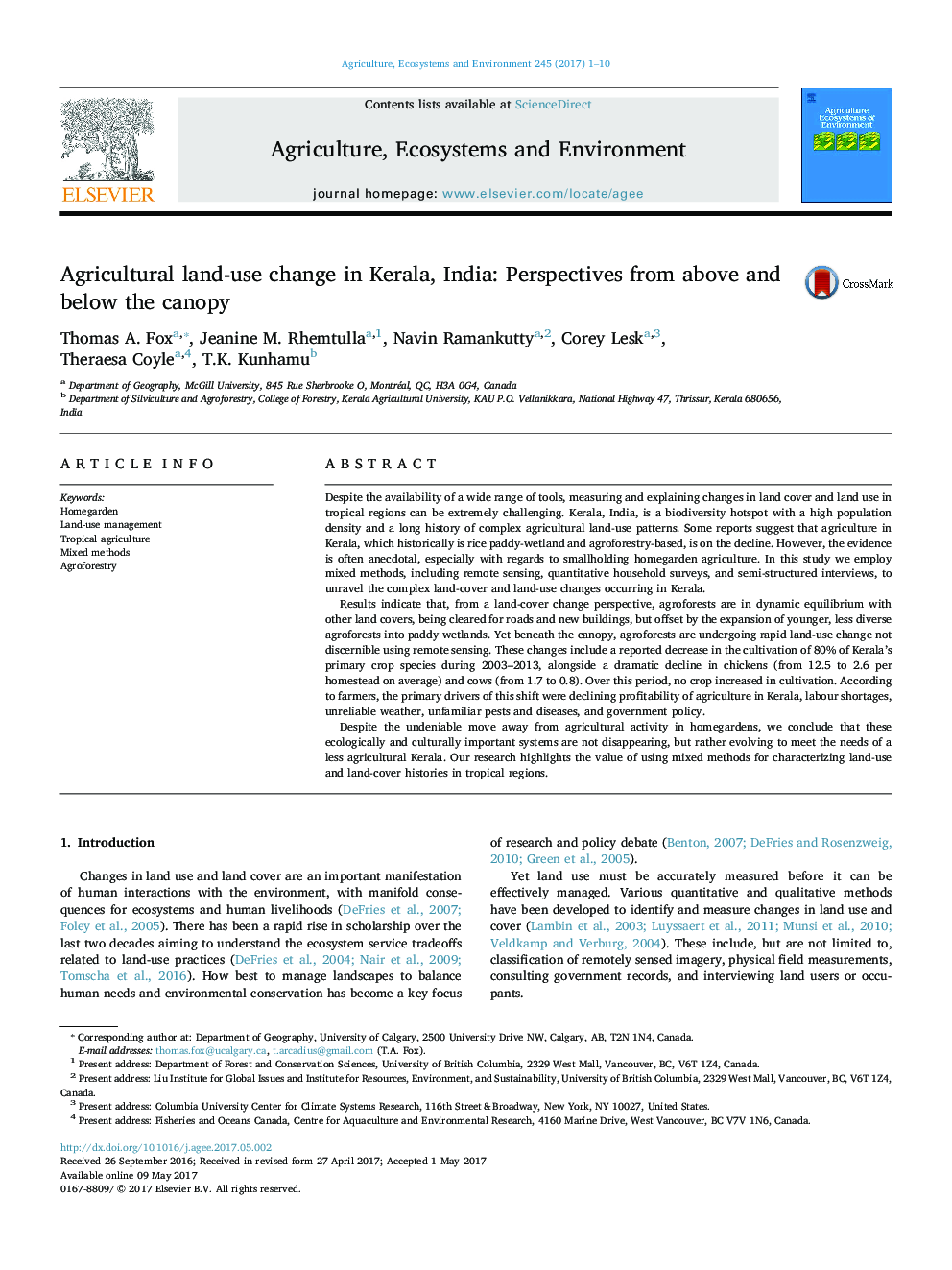| کد مقاله | کد نشریه | سال انتشار | مقاله انگلیسی | نسخه تمام متن |
|---|---|---|---|---|
| 5538098 | 1552007 | 2017 | 10 صفحه PDF | دانلود رایگان |
- Kerala's agroforests are in dynamic equilibrium in a changing landscape.
- Despite rapid rural development, homegarden agriculture remains widespread.
- However, crop production in species-rich homegardens is declining.
- Agricultural land-use studies in the tropics benefit from mixed-methods approaches.
Despite the availability of a wide range of tools, measuring and explaining changes in land cover and land use in tropical regions can be extremely challenging. Kerala, India, is a biodiversity hotspot with a high population density and a long history of complex agricultural land-use patterns. Some reports suggest that agriculture in Kerala, which historically is rice paddy-wetland and agroforestry-based, is on the decline. However, the evidence is often anecdotal, especially with regards to smallholding homegarden agriculture. In this study we employ mixed methods, including remote sensing, quantitative household surveys, and semi-structured interviews, to unravel the complex land-cover and land-use changes occurring in Kerala.Results indicate that, from a land-cover change perspective, agroforests are in dynamic equilibrium with other land covers, being cleared for roads and new buildings, but offset by the expansion of younger, less diverse agroforests into paddy wetlands. Yet beneath the canopy, agroforests are undergoing rapid land-use change not discernible using remote sensing. These changes include a reported decrease in the cultivation of 80% of Kerala's primary crop species during 2003-2013, alongside a dramatic decline in chickens (from 12.5 to 2.6 per homestead on average) and cows (from 1.7 to 0.8). Over this period, no crop increased in cultivation. According to farmers, the primary drivers of this shift were declining profitability of agriculture in Kerala, labour shortages, unreliable weather, unfamiliar pests and diseases, and government policy.Despite the undeniable move away from agricultural activity in homegardens, we conclude that these ecologically and culturally important systems are not disappearing, but rather evolving to meet the needs of a less agricultural Kerala. Our research highlights the value of using mixed methods for characterizing land-use and land-cover histories in tropical regions.
Journal: Agriculture, Ecosystems & Environment - Volume 245, 1 July 2017, Pages 1-10
